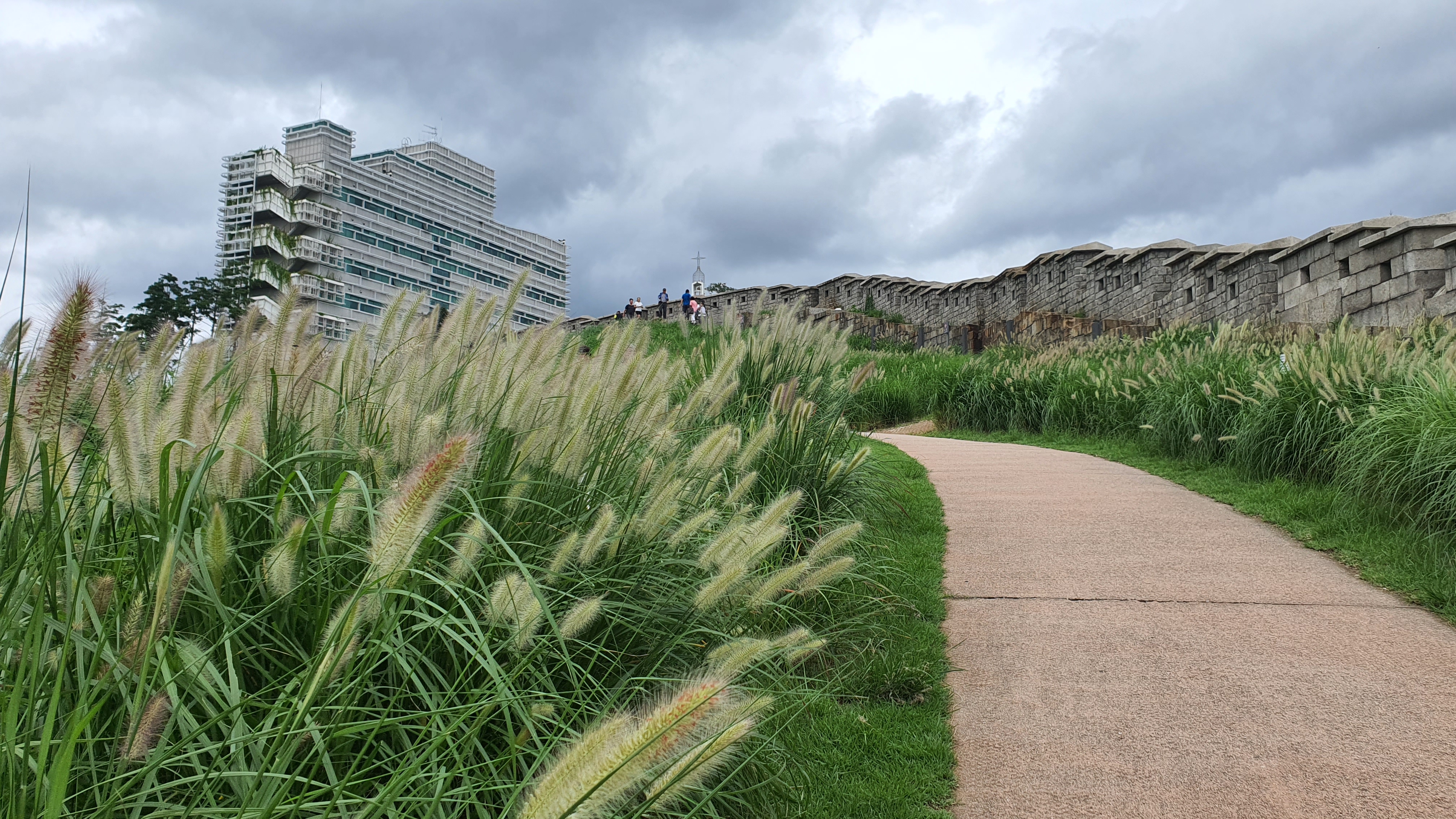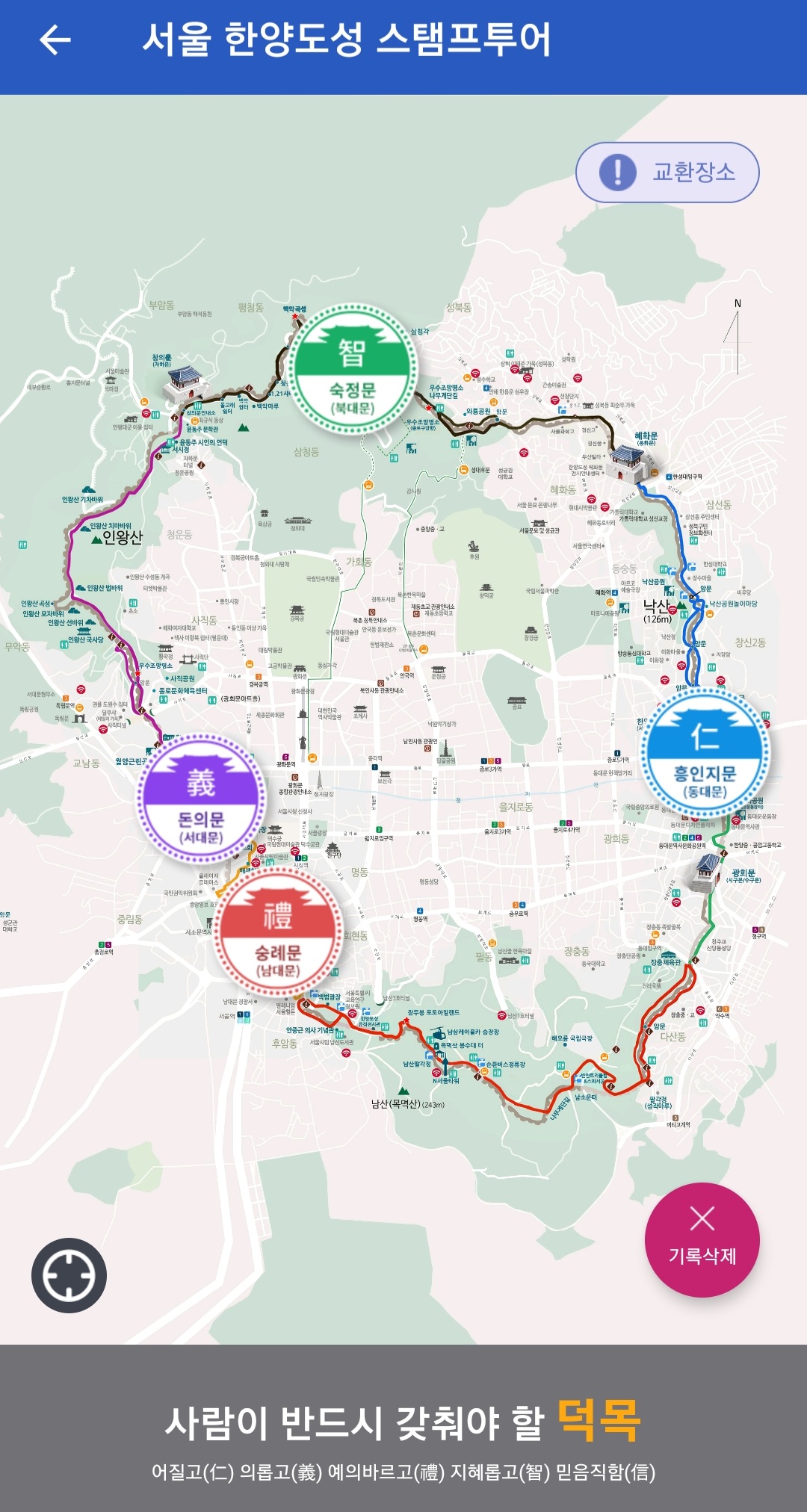
광복절이자 말복인 8월 15일, 거의 2년 만에 서울한양 성곽을 지인들과 함께 다시 둘러보았다. 한양도성과 4대문(돈의문은 멸실, 지금의 정동사거리)과 함께 스탬프투어 뱃지도 받았다. 청와대 뒷산인 북악산은 개방 후 많이 갔고 인왕산도 젊은이들과 외국인들이 많이 찾는 코스이지만, 남산은 거의 가본 적이 없다.
지금의 서울은 꽤 넓게 확장되었지만, 조선 개국 당시에는 도성과 사대문 안쪽만이 한양, 한성이었다. 사대문중 북악산 능선에 위치한 북대문인 숙정문(肅靖門)은 실제 사람이 다니지 않는 대문이었다.
조선이 1392년 개성에서 개국을하고 1394년에 한양으로 천도를 하였으며, 한수(漢水, 한강)의 북쪽이라는 뜻을 담고 있다. 한양도성은 태조가 1396년부터 궁궐과 도성 방어용으로 지은 것이다.한수도 고려까지 다른 명칭으로 불리었다.
한양, 한성, 한수, 한강의 한자가 '漢'이다. 왜 우리민족을 지칭하는 '韓'을 사용하지 않았을까 생각을 해보았다. 그 당시의 유교주의의 조선을 세운 사람들은 나라이름도 중국의 눈치를 보며 箕子朝鮮을 이어받아 朝鮮이라고 명명하였다. 箕子朝鮮은 중국에서 조작한 역사이다. 하물며 漢자도 '한나라'를 생각하며, '물이름 한'이라고 이름을 붙이지 않았을까.. 중국의 장강의 지류인 漢水가 우한에서 長江이랑 만나서 황해(서해)로 흘러가고, 우리나라 漢江과 황해에서 만난다.
근래에 와서 우리말을 되찾기위해 노력하고 있다. 서울시에서는 수돗물 이름을 우리 고유어인 '아리라'에 딴 '아리수'라고 부른다.
그리고 우리는 '한양'대신에 우리말에서 온 '서울'을 사용하며, 조선 대신에 大韓을 사용한다. 하지만 우리민족은 朝鮮의 후예임을 잊지않기를 바란다.
단군의 조선을..
'서울 한양도성'앱을 깔면, 간편하게 스탬프투어도하고, 인증샷 4곳(남산 봉수대, 낙산공원, 청운대표지석, 인왕산정상 바위)을 하고난 후, 서울시 '공공서비스예약' 사이트에서 예약을 하면 완주인증서와 인증뱃지도 준다고 한다.




On August 15, Liberation Day and Malbok(The last day of the three “Bok-nal”s), I looked around Seoul Hanyang City Wall again with my acquaintances after almost two years. I also received a stamp tour badge along with Hanyang City Wall and 4 gates (the Donuimun was destroyed and now is Jeongdong Intersection). Bukaksan, the mountain behind the Blue House, has been visited a lot since opening, and Inwangsan is a course frequented by young people and foreigners, but I have rarely been to Namsan.
Although present-day Seoul has expanded considerably, at the time of the founding of the Joseon Dynasty, only the capital city was the inner side of the four gates and called Hanyang and Hanseong (Hanyang City Wall). Sukjeongmun among the four gates, the northern gate located on the ridge of Bukaksan, was a gate that no one actually walked through. The Joseon Dynasty was founded in Gaeseong in 1392 and moved to Hanyang in 1394, meaning the northern part of the Han River. Hanyang Fortress was built by King Taejo in 1396 to defend the palace and the city.
The Chinese character for Hanyang(漢陽), Hanseong(漢城), Hansu(漢水), and Han River(漢江) is 'Han(漢)'. I wondered why they didn't use the word 'Han(韓)' to refer to our people. A few persons who founded the Confucianism of Joseon at that time also named the country 'Joseon(朝鮮)' by taking over the name of Gija-Joseon(箕子朝鮮). Gija-Joseon has been a history faked in China. They have not concede Dangun-Joseon(檀君朝鮮), so called Kojoseon(古朝鮮). Even the Chinese characters thought of the 'Han Dynasty(漢)' and named it 'Water-named Han(漢)'. Han Shui(漢水), a tributary of the Yangtze River in China, meets the Yangtze River in Wuhan and flows into the Yellow Sea (West Sea), where it meets the Han River(漢江) of Korea in the Yellow Sea.
Lately, We have been trying to get the Korean language back. In Seoul, the name of the tap water is called 'Arisu', which is derived from 'Arira', which is the Korean native language. And now we use the capital 'Seoul' in Korean instead of 'Hanyang' and the contry name is Daehan(大韓) instead of Joseon(朝鮮). And I hope to do not forget that we are descendants of Dangun-Joseon.
If you install the 'Seoul Hanyang City Wall' app, you can easily do a stamp tour and a badge. With taking 4 authentication shots (Namsan Bongsudae, Naksan Park, Cheongunde Stone, Inwangsan Peak Rock) you can make a reservation on the 'Reservation of Public Service' site to complete the tour. And you will be also provided Certificates and certification badge.
*Bok-nal(복날, 伏): The dog days of summer
'History' 카테고리의 다른 글
| 명도전(明刀錢)과 맥족(貊族) (1) | 2024.10.13 |
|---|---|
| 역사를 잊은 민족에게 미래는 없다 (0) | 2024.08.15 |
| 노량(露梁)은 노루목 (1) | 2023.10.09 |